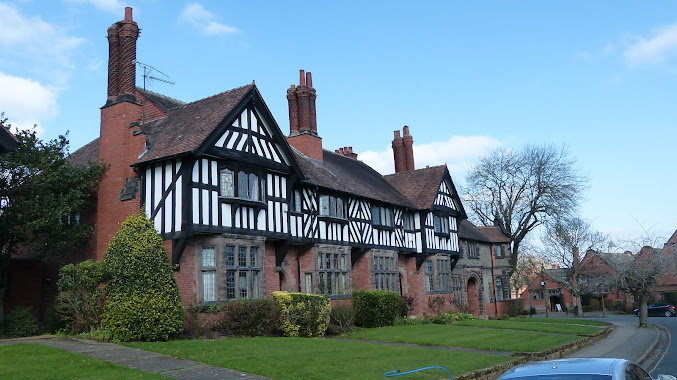The beautiful self-contained garden village of Port Sunlight was built at the end of the 19th century by Lord William Hesketh Lever as a home for 3,500 workers and their families at his soap factory, Lever Brothers, which eventually became the global giant Unilever.
He claimed that Port Sunlight was an exercise in profit sharing, but rather than share profits directly, he invested them in the village. He said, "It would not do you much good if you send it down your throats in the form of bottles of whisky, bags of sweets, or fat geese at Christmas. On the other hand, if you leave the money with me, I shall use it to provide for you everything that makes life pleasant – nice houses, comfortable homes, and healthy recreation.


Lever engaged over 30 different
architects during the building of Port Sunlight, named after the Lever
Brothers' most popular brand of cleaning agent, Sunlight. As a result
the village is an intoxicating mix of architectural styles set within 130 acres
of beautifully maintained parks and tranquil gardens. The garden village had
allotments and public buildings including the Lady Lever Art Gallery, a cottage
hospital, schools, a concert hall, open air swimming pool, church, and a
temperance hotel. Lever introduced welfare schemes and provided for the
education and entertainment of his workforce, encouraging recreation and
organisations which promoted art, literature, science or music.
It is the finest surviving example of early urban planning the UK. 90 years after its construction the whole of Port Sunlight was declared a conservation area in 1978 with 900 Grade II Listed buildings.
Add to this some excellent public sculpture, a fascinating museum, and one of the finest and largest war memorials in the UK.












